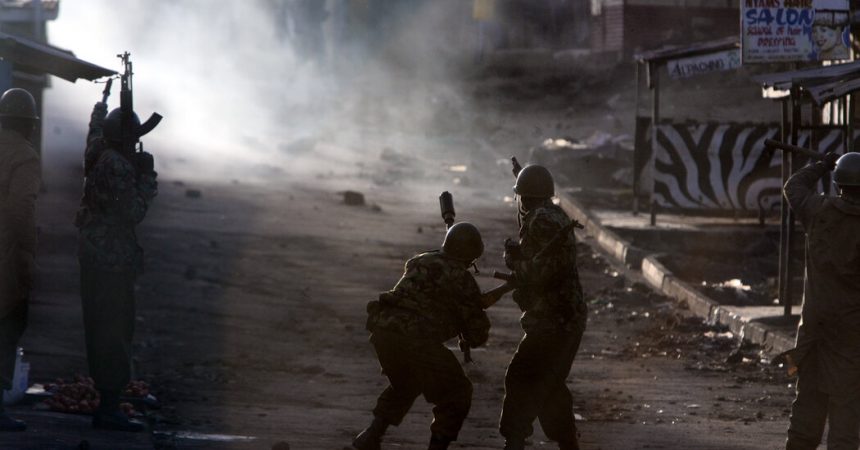Excessive force. Extrajudicial killings. A long history of brutality and impunity.
That’s the reputation of the Kenyan police, despite years of efforts to change it.
In the summer of 1990, Kenyans held one of their first major pro-democracy protests. Thousands of demonstrators flooded the streets of Nairobi, the capital, calling for an end to the dictatorship that then ruled the country. The police responded by shooting dozens of them.
On Tuesday, after members of a youth-led protest movement stormed the Kenyan Parliament — furious about an increase in taxes — police officers, armed with tear gas and assault rifles, poured into the streets to confront them.
By the end of the afternoon, Amnesty International and Kenyan civic organizations reported that five people had died from gunshot wounds.
Images began to circulate of young men soaked in blood.
This came on the same day that hundreds of Kenyan police officers deployed to Haiti as part of an international mission to bring stability to that troubled Caribbean country. Many Kenyans had already raised questions about the appropriateness of their police handling this mission.
The Kenyan police force is an extension of a colonial-era creation that the British used to control the population and stamp out dissent. During the 1950s, as Kenyans began to assert their right to rule themselves, the police and other British-run security services rounded up tens of thousands of Kenyans and hanged more than a thousand. It was an especially disturbing chapter of British rule, detailed in an prizewinning book, “Imperial Reckoning.”
Independence in 1963 didn’t dramatically change policing. The police, and especially the paramilitary wing called the General Services Unit and another group known as the Flying Squad, became dreaded characters, known for quick trigger fingers and wide impunity.
During an election crisis in 2007 and early 2008, police officers killed dozens of protesters. There were even instances of officers seen on television fatally shooting unarmed demonstrators.
In 2009, the United Nations sent a special rapporteur, Philip Alston, to Kenya to investigate the situation. The report he delivered was a bombshell.
“Police in Kenya frequently execute individuals,” the report said. “Most troubling is the existence of police death squads.”
The Kenyan government vowed to revamp the services, and it set up an independent police watchdog. Western donors, especially the United States, pumped millions of dollars into training and other programs. The focus was to help make the Kenyan police more accountable and more effective at countering terrorism. Crowd control and the use of nonlethal methods was not the priority.
Last year, in the first round of anti-tax protests, at least nine people were killed during rowdy demonstrations and their violent suppression. On Tuesday, protesters went further than they had ever gone: They stormed the Parliament compound and set fire to the building’s entrance before it was put out.
Amnesty International issued a statement on Tuesday evening detailing the result:
“At least five people have died from gunshot wounds. Thirty-one people have been injured. 13 have been shot with live bullets, 4 with rubber bullets, and 3 people have been hit with launcher canisters,” the statement said.
“The use of live bullets must now stop,” the statement concluded. “We can rebuild infrastructure, but we cannot bring back the dead.”







